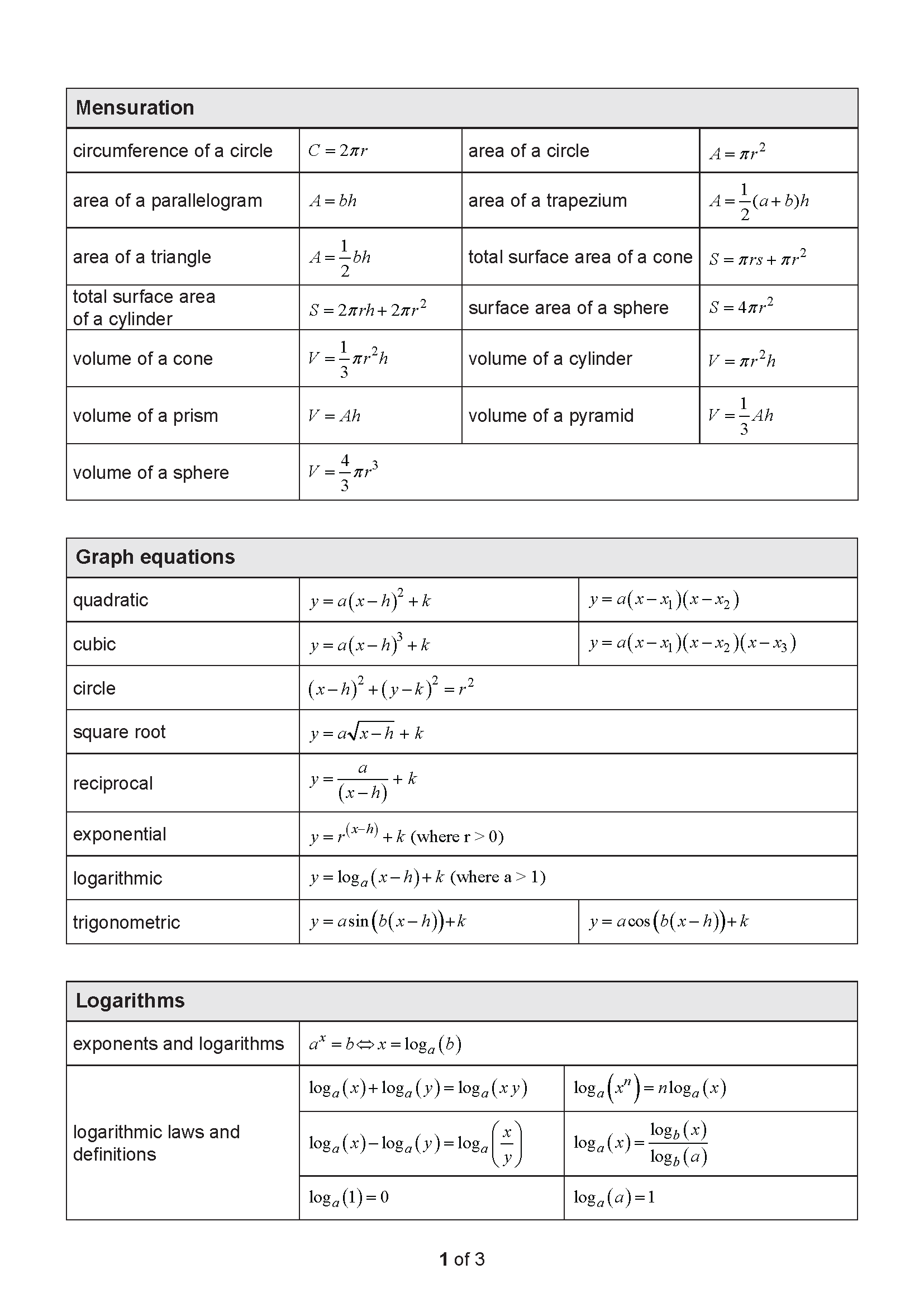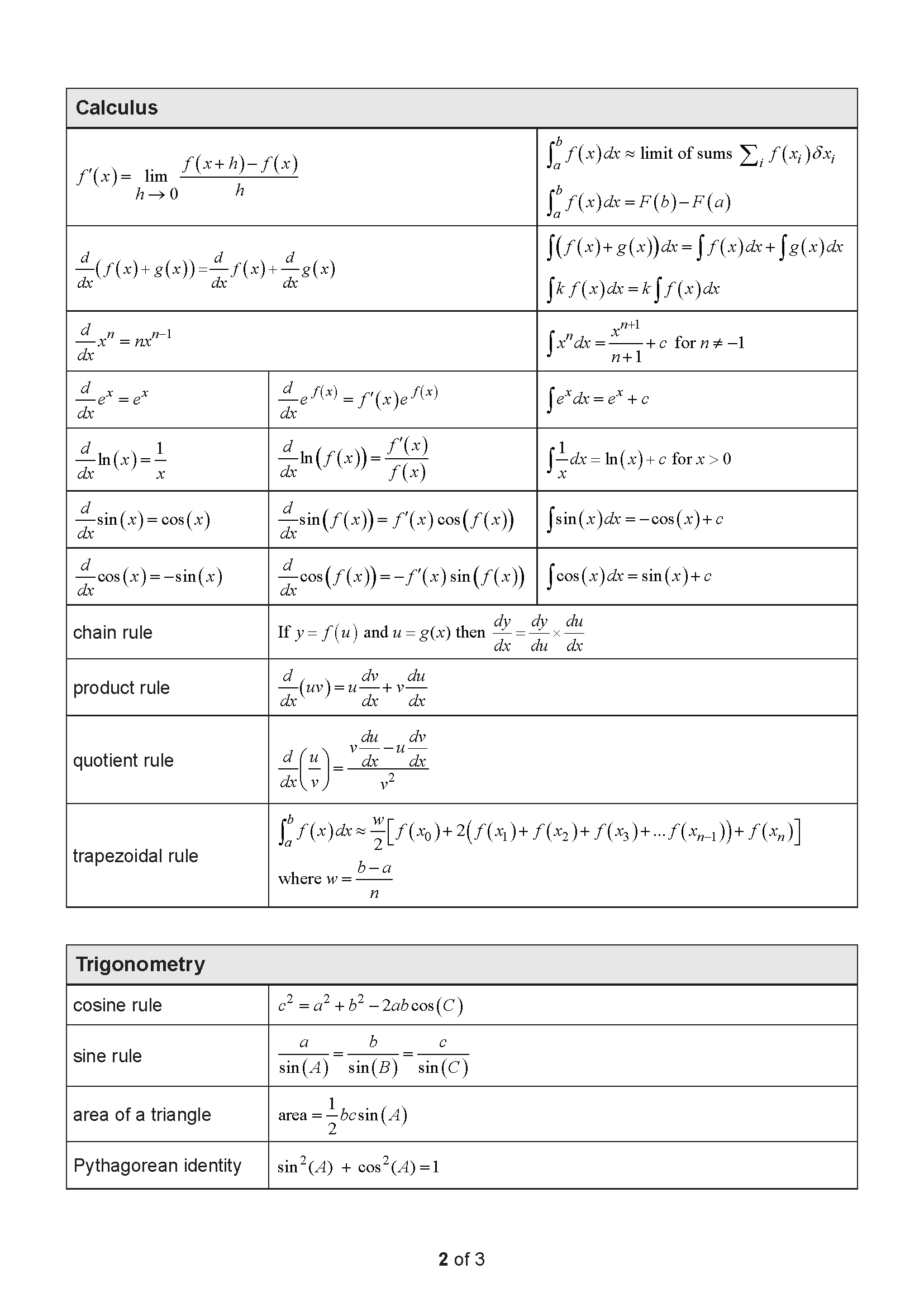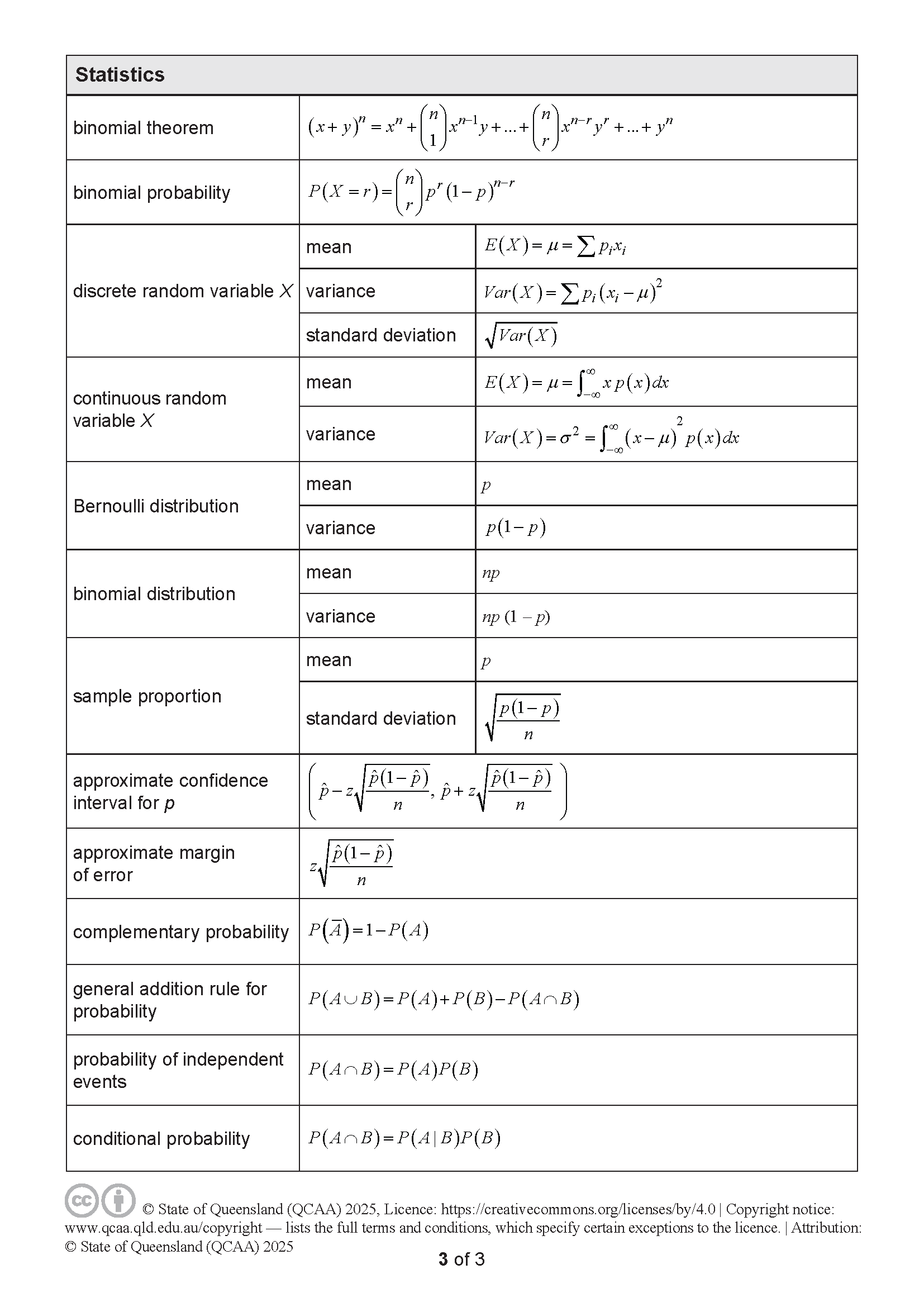QCAA Maths Methods Paper 1 Integral Calculus Mini Test 1
External Assessment Paper 1 — Technology-free
Number of marks: 10
Perusal time: 1 minute
Writing time: 15 minutes
Section 1
Instructions
• This section has 10 questions and is worth 10 marks.
• Use a 2B pencil to fill in the A, B, C or D answer bubble completely.
• Choose the best answer for Questions 1 10.
• If you change your mind or make a mistake, use an eraser to remove your response and fill in the new answer bubble completely.
Determine \(\int_a^b 2\cos(x)dx\), where \(a = \frac{\pi}{3}\) and \(b = \frac{\pi}{2}\).
- (A) \(1 - \frac{\sqrt{3}}{2}\)
- (B) \(\frac{\sqrt{3}}{2} - 1\)
- (C) \(2 - \sqrt{3}\)
- (D) \(\sqrt{3} - 2\)
Determine \(\int x^4 dx\)
- (A) \(4x^3 + c\)
- (B) \(5x^5 + c\)
- (C) \(\frac{1}{3}x^3 + c\)
- (D) \(\frac{1}{5}x^5 + c\)
Determine \(\int_0^3 \pi \sin\left(\frac{\pi}{3}x\right)dx\).
- (A) \(3\)
- (B) \(6\)
- (C) \(-3\)
- (D) \(-6\)
Determine \(\int_1^3 \frac{1}{2x} dx\).
- (A) \(\frac{1}{2} \ln 6\)
- (B) \(\frac{1}{2} \ln 5\)
- (C) \(\frac{1}{2} \ln 4\)
- (D) \(\frac{1}{2} \ln 3\)
Section 2
Instructions
• Write using black or blue pen.
• Questions worth more than one mark require mathematical reasoning and/or working to be shown to support answers.
• If you need more space for a response, use the additional pages at the back of this book.
– On the additional pages, write the question number you are responding to.
– Cancel any incorrect response by ruling a single diagonal line through your work.
– Write the page number of your alternative/additional response, i.e. See page …
– If you do not do this, your original response will be marked.
• This section has nine questions and is worth 45 marks.
The rate of change in the number of bacteria in a science experiment is represented by \(\frac{dP}{dt} = e^{2t}\), \(t \ge 0\), where \(t\) represents the time (hours) since starting the experiment and \(P\) represents the number of bacteria present (thousands). Initially there are 60 000 bacteria present, i.e. \(P(0) = 60\).
a) Determine the equation for \(P(t)\). [2 marks]
b) Determine the change in the number of bacteria during the third hour. Express your answer in terms of \(e\). [2 marks]
c) Determine how long it will take for the number of bacteria present to double after starting the experiment. [2 marks]
END OF PAPER


